Faith and Defiance

Creating a network of schools and services under the noses of the KGB. A memoir of challenge and survival
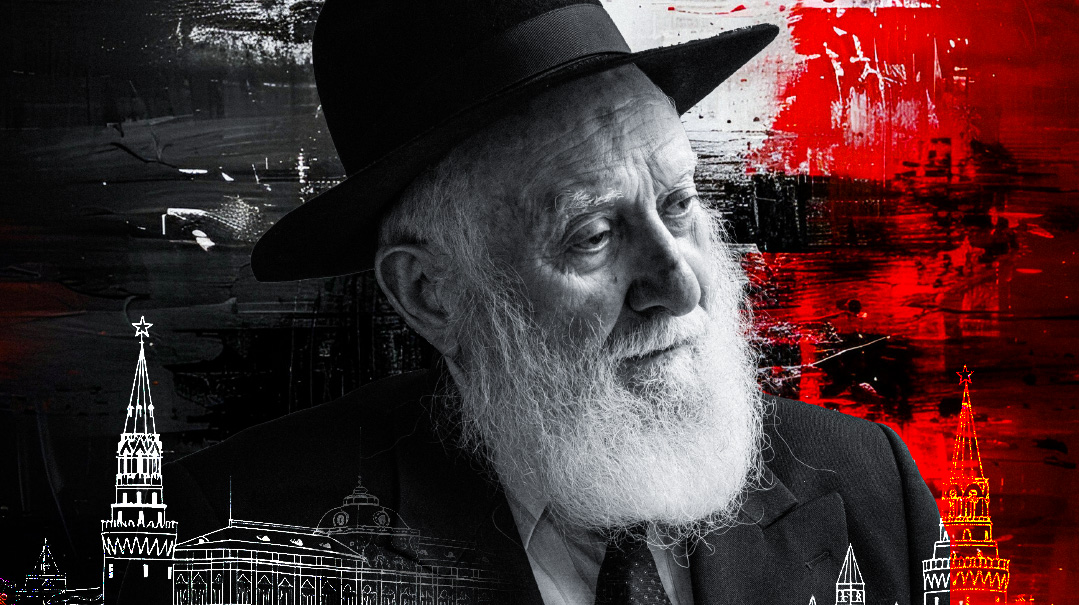
Photos: Jeff Zorabedian
Lvov train station, July, 1960
“Passport please,” the Soviet policeman demanded.
Rabbi Hillel Zaltzman, clutching a suitcase full of anti-Communist contraband — including siddurim, Tanyas, and religious pamphlets — handed over his passport, heart racing with fear.
The policeman scanned the document, noting suspiciously that Reb Hillel was from Samarkand, Uzbekistan — 4,000 kilometers from Lvov.
“Open your suitcase, comrade,” the policeman instructed.
Rabbi Zaltzman was panic-stricken and thought the game was up. But then he recalled an old chassidic tale. Back in the 1800s, went the story, a Lubavitcher chassid named Reb Moshe Meisels was ordered by his rebbe, Rav Shneur Zalman of Liadi, to spy for the Russians against Napoleon. Caught and accused of espionage (according to the story, by Napoleon himself), Reb Moshe managed to feign complete innocence by concentrating on the chassidic idea that, “the mind rules the heart.”
Rabbi Zaltzman attempted the same strategy.
“I mustered my inner reserves… and with a relaxed smile I began to open the suitcase,” he says. At that point, the only thing between him and a steep jail sentence — or worse — were a few towels and articles of clothing sparsely covering the contraband material. “I felt the policeman eyeing me and I continued to smile. After I opened the latch, I started to raise the cover. He continued to watch me, and I continued to smile for all I was worth,” Reb Hillel describes.
After a heart-stopping minute, the policeman nodded. “Fine, you can close the suitcase. Please move out of the way.”
INThe Jewish Underground of Samarkand: How Faith Defied Soviet Rule (Mandel Vilar Press), Rabbi Hillel Zaltzman’s newly released memoir, terror and heroism play defining roles. The lifestyle Rabbi Zaltzman endured — full of privation, steep risks, and sheer daring — reads like the dramatic backdrop for an adventure novel. But the stakes — job loss, imprisonment, or worse — were all too real.
“Any Jew who sought to adhere to Torah and mitzvos was marked for incessant persecution,” Reb Hillel says. But despite the terror-laden atmosphere, he, along with many Russian refugees as well as native Bukharans, managed to keep Torah and mitzvos under the worst years of Soviet oppression.
Rabbi Zaltzman, a Chabad chassid living in Crown Heights, never planned on writing a book.
“I am not a professional writer or journalist. I never once imagined that I would one day record my memories of Samarkand, let alone write an entire book,” he admits. So what inspired him to write it? “My son asked me,” Rabbi Zaltzman says simply. “He said, ‘Tatte, how did you survive in the Soviet Union as a religious Jew?’ ”
Stirred by his son’s poignant query, Reb Hillel wrote up his memories and sent them via fax to his longtime friend from Samarkand, Rabbi Moshe Nissilevitch, who had since immigrated to Eretz Yisrael, to review. “I began to write. I wrote, I wrote, I wrote, another page, another page, another page,” he recounts. Soon his memories took up over 20 pages, though they were barely legible. “I myself had difficulty reading the words, having hastily included many notes and corrections throughout the manuscript… it was a mess,” he ruefully admits.
Intimidated, he considered throwing the whole thing away, but another friend living in Eretz Yisrael, Reb Shmuel Levin, encouraged Rabbi Zaltzman to have his memories typed and edited professionally. A series of articles, edited by Rabbi Avrohom Yeshaya Reinitz, appeared in a Chabad magazine beginning in 2000, and soon became a favorite with readers. Eventually, despite some skepticism from well-meaning friends — “At your age you’re buying a computer?” — Rabbi Zaltzman bought himself a computer and taught himself to type.
In 2013, the articles were compiled into a Hebrew book titled Machteres Samarkand She’he’ira Lamerchakim, which was eventually translated into English, Yiddish, and Russian, and sold over 16,000 copies.
“The English edition of the book was so well received by readers, it occurred to me that this story could reach a wider audience in addition to the Chabad community,” Rabbi Zaltzman explains. A few months ago, a version was published in English, abridged to 406 pages, it contains a treasury of stories of courageous risk-taking and self-sacrifice in the shadow of Soviet tyranny.
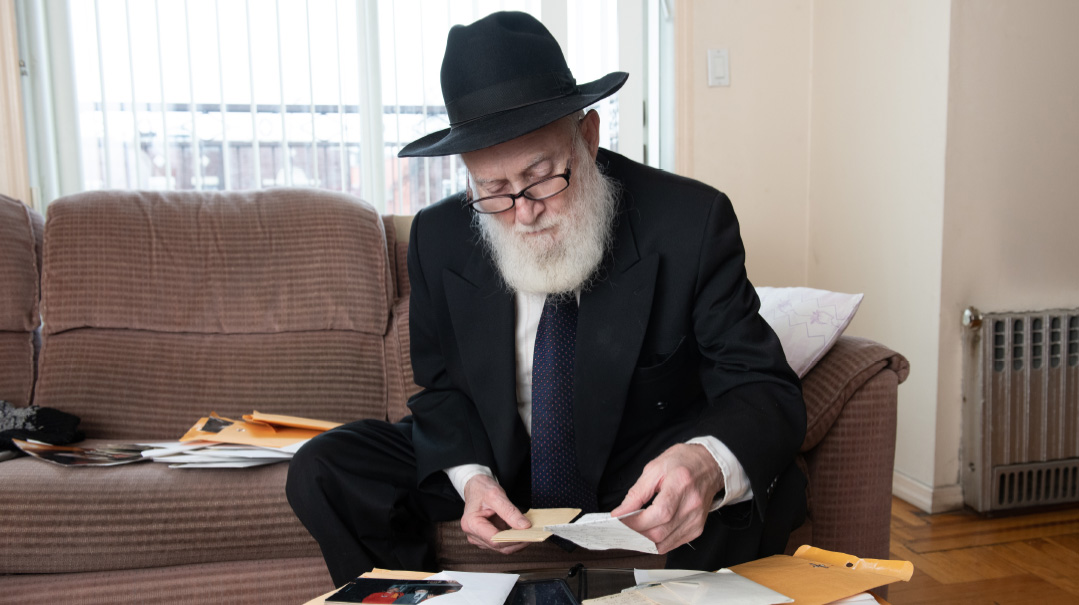
Rabbi Hillel Zaltzman’s unintended book was the answer to his son’s question: “Tatte, how did you survive under the Soviets as a religious Jew?”
Lurking Dangers
Rabbi Hillel Zaltzman was born in 1939 in Kharkov, Ukraine, to Reb Avrohom and Brachah Zaltzman. Reb Avrohom, a shochet, would often give his last bit of hard-earned money to fellow Jews in worse straits than he was. Brachah Zaltzman was famed for giving up her wedding ring as a donation to the Rebbe Rayatz (Rav Yosef Yitzchak Schneerson). When Hillel was barely two years old, the Zaltzmans’ peaceful family existence came to an abrupt end. In June 1941, the Nazis invaded Ukraine.
The Zaltzmans didn’t immediately flee to safer shores. “They said on the radio that the Nazis were doing barbaric things to the Jews,” Reb Zaltzman says, but in Kharkov, far from the front on the very eastern edge of Ukraine, no one believed the rumors; the townspeople thought it was Soviet propaganda. Soon enough, however, streams of refugees began to arrive from the west, confirming that the reports of Nazi atrocities were all too true. The Zaltzmans realized they had to escape. One of the last Jewish families to leave Kharkov, they crowded onto a freight train and headed southeast, toward the Soviet Republic of Uzbekistan.
“We went to Middle Asia because it’s far from the front, and the climate is warmer than in Kharkov,” Rabbi Zaltzman explains.
Samarkand, the city in Uzbekistan where the Zaltzmans fled, was safe from the Nazis, but rife with other dangers for a religious family — the close surveillance of the Soviet KGB. While the Soviets put anti-religious persecution on the back burner during World War II, they resumed their campaign with a vengeance as soon as the Germans were defeated.
What was the most difficult mitzvah to keep in Samarkand? “Chinuch,” Reb Hillel says. With atheist ideology pervading every aspect of the Soviet school curricula, not to mention the hurdles of attendance on Shabbos and Yom Tov, many of the refugee Lubavitch parents did anything they could to keep their children out of state-sponsored schools. But it was no easy feat.
“The principal would send out his teachers during the day to trek from house to house, courtyard to courtyard, and innocently inquire of all the neighbors whether there were any school-age children around. When the neighbors knew of children who were the right age for school, they wouldn’t hesitate to say so,” Rabbi Zaltzman recounts. Consequently, the children had to remain hidden at all times.
“We couldn’t be seen on the street or even in the courtyard of our house,” Rabbi Zaltzman describes. Many religious families devised communication codes to know when it was safe to answer the door. “Our code is still etched in my memory,” Reb Hillel says. “Two knocks on the door or ringing the bell, pause; three knocks, pause; and then two more knocks.”
The Zaltzmans managed to keep Hillel hidden for two years, but by the time he turned nine, the respite was over. Neighbors discovered Hillel’s existence and reported to the local principal, who threatened to take him away from his parents and send him to a government orphanage if he wasn’t enrolled in school. Reb Avrohom duly registered his son — but resolved that Hillel would not attend school on Shabbos. He chose a school in a predominantly Muslim neighborhood, where he reasoned that the teachers would be unfamiliar with Jewish practice. After presenting Hillel’s teacher with a nice gift, Reb Avrohom casually mentioned that his son was physically weak and would need to stay home on Saturdays to rest.
At first the ruse worked, but after two years of relative calm the principal finally caught on. Calling Hillel into his office, “he looked at me with a serious face and said, ‘Why don’t you come to school on Saturday? Who taught you that?’ ”
Hillel bravely kept his composure. “Nobody taught me. I just need two days of rest.”
“Then you can relax Sunday and Monday, but on Saturday you come to school!” the principal barked.
Undaunted, Hillel’s father transferred him to another school, nearly an hour’s walk away. In the winter, he’d trudge through rain and snow, but “I was happy that this sacrifice granted me the ability to sanctify Shabbos,” Rabbi Zaltzman says.
Soon enough, though, the new school too began to question Hillel’s frequent Saturday absences. Reb Avrohom tried to transfer him yet again, which turned out to be a providential step.
When my father went to my school and said he was switching me to a new school, he suggested that they avoid the bother of transferring the documents [to register Hillel in the new school] and that he would take care of it. The principal, happy to avoid the paperwork, agreed to his suggestion and handed my father the stack of papers. As it happened, my father took his time getting to the new school where he’d decided to register me. Two weeks elapsed and my father noted that neither school had taken any further interest in his son. He decided to wait a bit longer and see what would happen. After another few weeks went by, he realized that nobody had information about where I was supposed to be going to school and nobody cared. So I remained at home and my public school tribulations came to a close.
Now unfettered from a public-school schedule, Hillel’s Jewish education began in earnest. His parents arranged for him to learn with Lubavitch mashpi’im such as Reb Benzion (Bentcha) Maroz, together with other friends, often in dingy cellars or secluded rooms. These mashpi’im — in addition to Hillel’s parents — imbued him with a fiery determination to keep the mitzvos at all costs.
One of Hillel’s early rebbeim was Reb Berke Chein, who had been sentenced to death by the KGB. In a moment of Soviet “mercy,” his sentence was commuted to ten years of harsh imprisonment. Reb Berke’s wife bribed Soviet officials for his early release after two years — but this was just the start of a yearslong, miserable exile. Shortly after his release, the authorities suddenly decided to reintern those who had been released early, including Reb Berke. He began a life on the run, spending years running from one hiding place to another, “his freedom hanging by a hair,” in Reb Hillel’s words. Eventually he ended up hiding in the Zaltzmans’ home in Samarkand, where his fear of discovery was so great that he refused to write to his wife back in Lvov — for nearly ten years.
Once Reb Berke felt comfortable in our home, my mother began coaxing him to update his wife about his situation. “At least,” urged my mother, “let her know that you are alive, and not in jail, but with Jewish families.” Reb Berke disagreed, insisting that the KGB would see the letter and then likely discover that he was in Samarkand…. The KGB were probably interrogating her every so often, so as to extract information from her about his whereabouts. “She would prefer not to know and not have anything to tell anyone,” he stated firmly.
“That’s how great our fear was under Stalin’s rule,” Rabbi Zaltzman explains.
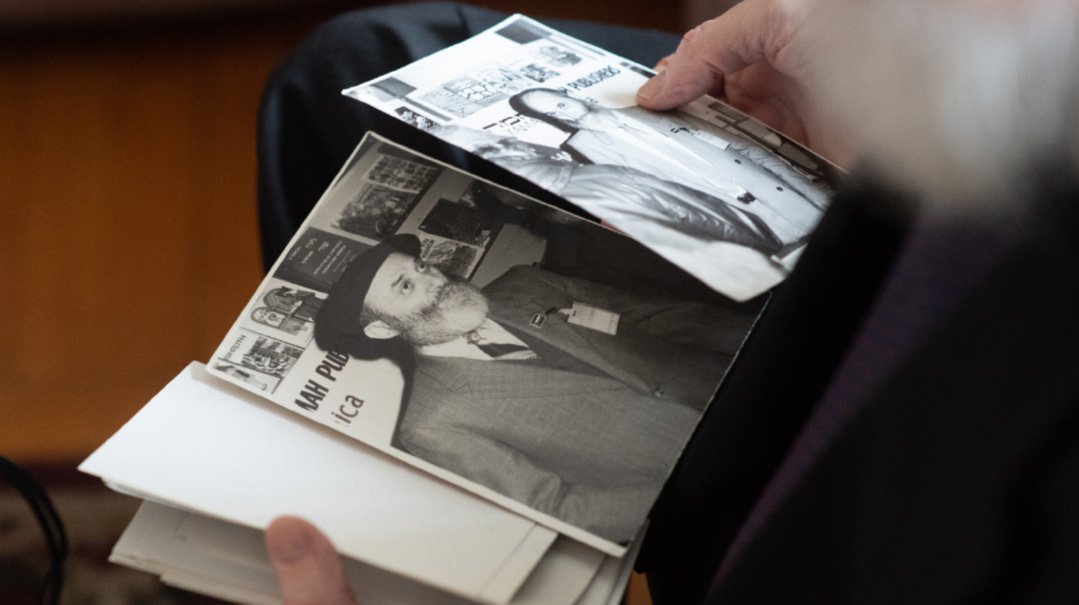
Under the noses of the KGB and their web of informants, Reb Hillel and his friends were undeterred when it came to organizing Torah classes. Finally, face-to-face with the Rebbe
With a Prayer
That pervasive fear made davening with a minyan particularly difficult. And ironically, it wasn’t the lack of a shul, but rather the existence of an official Soviet-sanctioned shul in Samarkand that made davening with a minyan nearly impossible. As the only legally authorized shul in the city, it was rife with KGB-backed informants (oftentimes, the shul’s gabbaim) who kept tabs on every single attendee. While adults were permitted to attend synagogue, children — who were supposed to be indoctrinated in atheism — could be taken away from their parents and sent to a government orphanage if they were spotted in the shul. As Hillel and his friends were not yet bar mitzvah, they could not form their own secret minyan, nor could they look for help from any adults in the community, whose absence from shul would be immediately noted by the KGB informants. It was an impossible conundrum that often left Hillel davening alone.
When Hillel was about eight or nine years old, he and his friends (particularly those already above bar mitzvah) were determined to have a proper minyan for the Yamim Noraim, and miraculously, everything fell into place. A prominent member of the shul passed away at the end of Elul, and the gabbaim permitted a private minyan to gather in his home for the week of shivah. The minyan continued through the shloshim, and once the gabbaim of the main shul returned to their official posts, Hillel, his older brother Berel, and other young boys were able to daven with a minyan for the Yamim Noraim, complete with a sefer Torah borrowed from the main shul.
Somehow, to everyone’s surprise, even after the month of mourning elapsed, the gabbaim of the main shul did not say anything about the borrowed scroll. Elated, the boys spent the next few months whisking the sefer Torah from one hiding place to another to be able to continue davening with it on Shabbosos and Yamim Tovim (weekdays were still considered too risky). “The landlord or whoever was hosting the minyan would look out from a crack, and say, ‘No one’s in the street, walk out,’ and one by one we walked out from the house where the minyan was,” Hillel remembers.
The saga was far from over, however. Once, as they transferred the sefer Torah from one hiding place to another — wrapped in a blanket and disguised as a child — they found that their act was a bit too convincing.
[Reb Refael Chudaidatov, a prominent Bukharan Jew]… draped the Torah scroll in a blanket and took a taxi home. When he got out of the car, a gentile neighbor on the street noticed the bundle he was carrying and instinctively assumed it was a child. However, after noticing the wooden rollers jutting out slightly from the blanket, she became suspicious and determined that it was a dead child, its legs dangling from the coverlet.
It was a short while prior to Pesach and the woman had been told that Jews use the blood of Christian children in their matzos for the holiday. Something clicked in her superstition-addled mind and she immediately called the police to arrest the Jew who had undoubtedly just slain a gentile child in cold blood.
Within minutes, undercover policemen stormed Reb Chudaidatov’s home. The gentile neighbor, close on their heels, pointed at Reb Chudaidatov and yelled, “that’s the man!” After some heart-stopping moments as the police overturned the house in their search, they uncovered the suspicious blanket-wrapped package in a large cupboard. To their utter astonishment, it was not a dead child, but a Torah scroll. Reb Chudaidatov bluffed, inventing a fictitious minhag to explain its presence: the custom to read from a Torah scroll on the day of one’s father’s passing. The policemen gave him no trouble, and actually apologized for their intrusion.
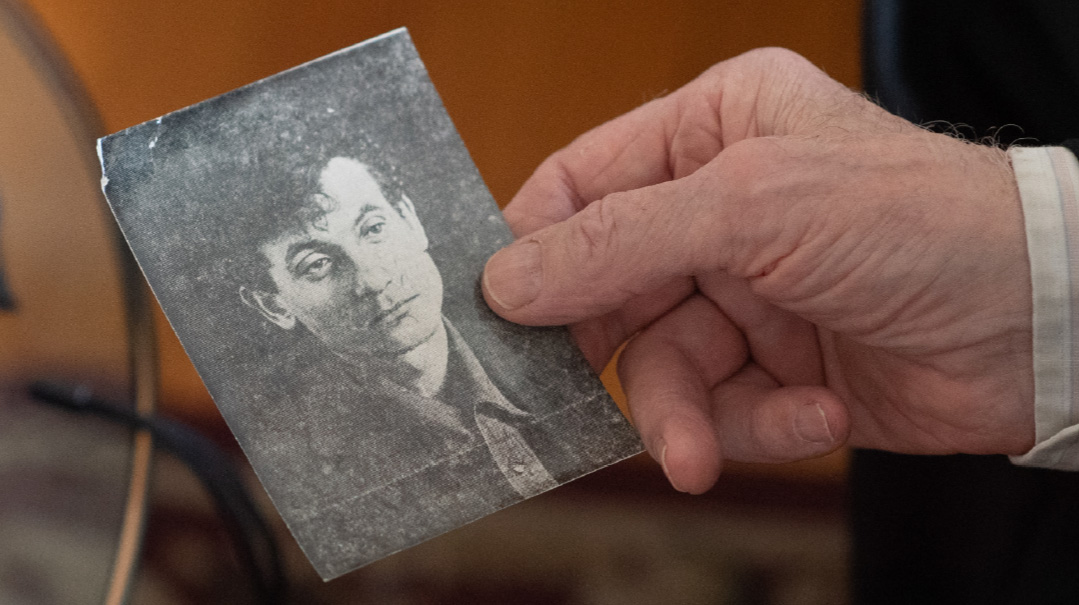
Going Against the Grain
While going to yeshivah and davening with a minyan presented countless hurdles in the Soviet Union, baking matzah in Samarkand was not inordinately difficult — somehow it wasn’t on the KGB’s radar — but obtaining shemurah matzah was a different matter. Since local wheat fields were government-owned, it was nearly impossible to obtain wheat that had been guarded from the time of harvest. But in the 1950s, Hillel, together with fellow bochurim who were determined to do the mitzvah with hiddurim, finally got their lucky break.
“There was a righteous and G-d fearing woman in Georgia [the Soviet Republic] who grew wheat in a small field near her house, specifically for making shemurah matzah,” Rabbi Zaltzman remembers. They placed an order, and she airmailed them the wheat shortly after Succos. But grinding the wheat into flour proved to be much more complicated than they had anticipated.
Hillel and his friends started the job with a hand-powered coffee grinder. But after hours upon hours of painstaking work, he decided there had to be a more effective solution.
“One day, I thought of connecting the motor of a motorcycle [which almost everyone owned in those days as a way of getting around the city] to the coffee grinder, which would drastically reduce the labor needed to operate the mill,” Reb Hillel remembers. “I replaced the handle of the grinder with a wheel and then connected the wheel to the motor. This enabled the discs of the grinder to churn very quickly.”
The only remaining concern was noise — the boys arousing the neighbors’ curiosity. Then one of the local Lubavitch families, the Mishulovins, offered their home for the project; it faced a cemetery, and as Rabbi Zaltzman quips, “we didn’t need to worry about quiet neighbors like those.” The motorcycle motor worked like a dream — grinding the wheat much more efficiently than the hand-cranked coffee grinder — at least at first. The contraption blew out not long after starting, but luckily only after most of the wheat for that year’s matzah had been ground.
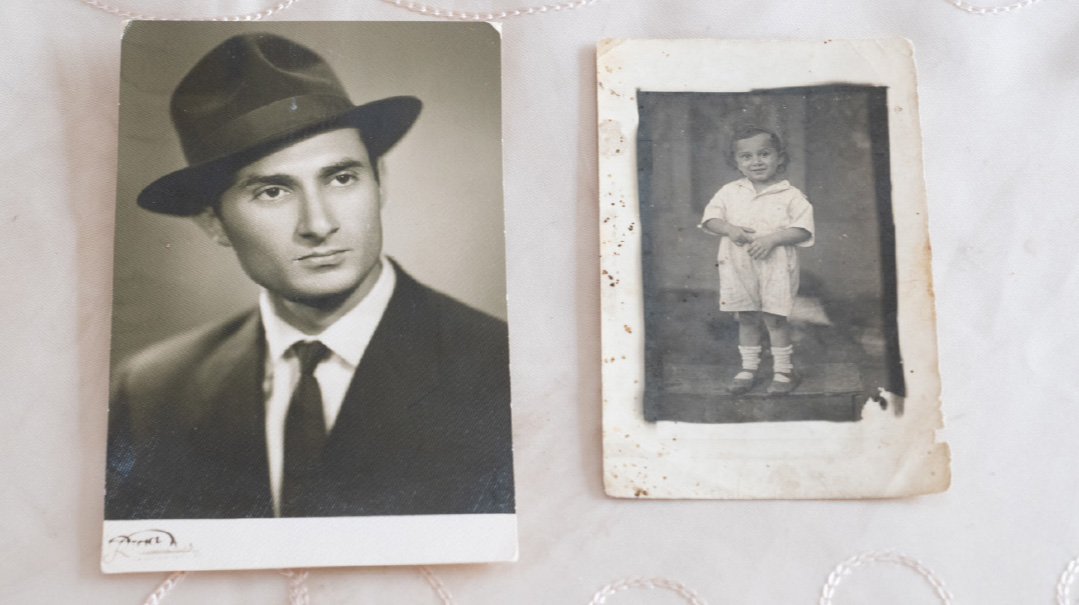
Underground Secrets
Hillel’s cohort had always been involved in clandestine mitzvah activity, but their reach expanded significantly after Stalin’s death in 1953. The entire country — particularly, the Jews — let out a collective sigh of relief with his sudden demise. “[Stalin’s] body was placed in the mausoleum where Lenin had been interred, so that anyone and everyone could have the ‘merit’ of seeing his grave. Indeed, we considered it a great merit to see him lying in a coffin,” Hillel reminisced.
The KGB now became slightly more permissive and less brutal. “Almost all political prisoners were freed, including many chassidim who had been exiled to labor camps in Siberia.”
Hillel and his friends felt the time was ripe to form an official organization for their activities. Led by Moshe Nisselevitch, their goals of “preservation and promotion of Judaism,” were, as Hillel admits, “completely outrageous” in Soviet Samarkand. But Moshe Nisselevitch managed to imbue a sense of thrill and intrigue into the idea and so, despite the obstacles, the organization got off to a promising start.
At their first meeting — when the sefer Tanya was brought concealed in the folds of that day’s Pravda [the official Communist newspaper] — the members gave their word to devote themselves to the Lubavitcher Rebbe’s leadership. (Rebbe Menachem Mendel Schneerson was already the Rebbe then.) Of course, they had no actual means of communicating with the Rebbe in New York — “we were scared to even mention the words ‘rebbe’ or ‘chassid,’” Hillel recounts — but the initiation provided direction for their underground work. They eventually named the organization Chamah, for “Chabad M’Bris Ha’Moatzos” – Chabad of the Soviet Union.
One of Chamah’s most pressing projects was to organize secret Torah classes for local Bukharan children. A major hurdle was scheduling: Since the children attended public school, the learning would have to take place early in the morning or later in the evening.
“These boys, only nine, ten, and eleven years old – on their own initiative — arose at the crack of dawn and studied Torah,” Rabbi Zaltzman remembers. Securing appropriate hideouts for learning, though, was much more challenging, especially since the parents themselves could not be trusted with the secret.
“Once, a woman burst into Reb Moshe Nissilevitch’s home,” Reb Hillel recounts. “ ‘If you entice my son to learn Torah with you, I will inform on all of you to the authorities!’ the woman bellowed. She was terrified that studying in a yeshivah would distract her son from earning a degree and gaining financial independence, and she was hardly the only parent to resort to such drastic measures.” Still, despite these threats and the constant fear of detection, Chamah quickly had more students than the teachers could manage. Soon, the oldest and brightest students were trained to teach the younger ones, and the underground network eventually grew to an astonishing 1,500 students across eight cities.
Funding for the yeshivah network was in ever-short supply, but Reb Hillel nevertheless often turned down monetary donations. Taking financial assistance — even from trustworthy friends — meant risking the yeshivah’s exposure to the Soviet authorities, and it was a risk that he could not afford.
Once, as Hillel travelled through central Russia on behalf of Chamah, he met a fellow Lubavitcher, Reb Yisrael Pevzner, at the latter’s nephew’s wedding in Moscow. Reb Yisrael, who had procured copies of Likutei Dibburim and Likutei Sichos on behalf of the yeshivah in earlier years, drew Hillel to a quiet corner and handed him an envelope. Inside was one thousand rubles — enough to pay one teacher’s yearly salary. Still, to Rabbi Pevzner’s utter astonishment and consternation, Hillel refused to take the envelope.
“I knew that if I accepted the money, it would prove that the yeshivah was in existence,” Rabbi Zaltzman explains, recalling the uneasy feeling of turning away a real friend.
His fellow Chamah leaders back in Samarkand were in full agreement. The more people who knew of the yeshivah, the more danger there was that someone could let slip a hint of its existence, or crack under the pressure of a KGB interrogation.
“This was all despite the fact that we did not doubt our friend Reb Yisrael for a moment, and we needed the money,” Rabbi Zaltzman says. “Secrecy was [still] the number one priority.”
As Chamah’s work continually expanded, Hillel’s cohort was desperate to receive some sign of encouragement from the Rebbe. But this proved nearly impossible.
“The political situation in Russia at that time [the 1950s] was still precarious, and people were extremely fearful, especially when it came to communicating with the West,” Rabbi Zaltzman says. It was not until the 1960s that they finally made contact with Rav Schneerson. Naftali Estulin, one of the first students in Chamah’s underground yeshivah, emigrated from the USSR in 1956, and he passed along a detailed report of Chamah’s activities to the Rebbe. About a month later, they received their long-awaited response: “Zeide wants to know how ‘Aunt Nechama’ is doing and if she has enough helpers.”
“Aunt Nechama,” of course, was a coded reference to Chamah. “This line was short but full of meaning,” Rabbi Zaltzman reminisces. “The very fact that the Rebbe had heard of our work and inquired about it encouraged us tremendously.”
In 1961, Hillel submitted his first application to emigrate to Israel. “In those years, hardly anyone dared to submit such a request,” he says. Requesting to leave the Soviet “paradise” was considered almost treasonous, and involved countless hurdles. Particularly intimidating was obtaining the necessary letter of recommendation from the applicant’s employer.
“Anyone who asked for this letter directly was likely to get an outright refusal and/or immediate firing. Managers were afraid that if they signed, they would pay dearly,” Rabbi Zaltzman explains.
But Reb Hillel, who by then was a supervisor in a small garment label factory that also employed many other chassidic Jews, came up with a novel solution for himself and his employees.
I would wait until I had accumulated a pile of hundreds of letters needing the manager’s signature, and I would prepare one or two letters on official stationary, on which I would write, in the name of the manager, that he recommended said employee and allowed his to request to emigrate. I would put this paper within the pile of papers, after several dozen letters. When the manager received this pile of papers, he glanced at the first one and signed it, looked at the second one and signed it, and kept this up for several letters, until he got tired and began signing sheet after sheet without examining them…. In this way, I was able to arrange these letters for myself and for all of the Lubavitchers registered as my employees.
Still, it took a full ten years until Hillel, his wife Shoshana (whom he’d married in 1964), and their seven-year-old daughter Chani were approved to emigrate. When they reached the United States in December of 1971, Hillel finally got to meet the Rebbe whom he had devotedly followed from afar. It was close to midnight when he arrived in Brooklyn, but couldn’t bring himself to head to sleep before getting a glimpse of 770 Eastern Parkway — Lubavitch world headquarters.
As the famed building came into view, my host pointed out a glow emanating from a room on its left-hand side. That room was the Rebbe’s study, and despite the late hour, he was still there. The sight reminded me — with a thousand degrees of distinction — of the oft-repeated Communist fairy tale, about how while all the citizens of the Soviet Union were fast asleep, one window at the Kremlin was still lit. There, they would say, sat Stalin — of cursed memory — worrying about world peace.
Was this not the perfect opposite of that lie? I thought to myself. While the rest of the world is busy with their own affairs, here sits the Rebbe, who truly concerns himself with everyone else’s welfare.
It was a stark contrast between what Rabbi Zaltzman had endured and the hope that lay ahead — from fear to security, from cruelty to compassion, from falsehood to truth, and from darkness to great light.
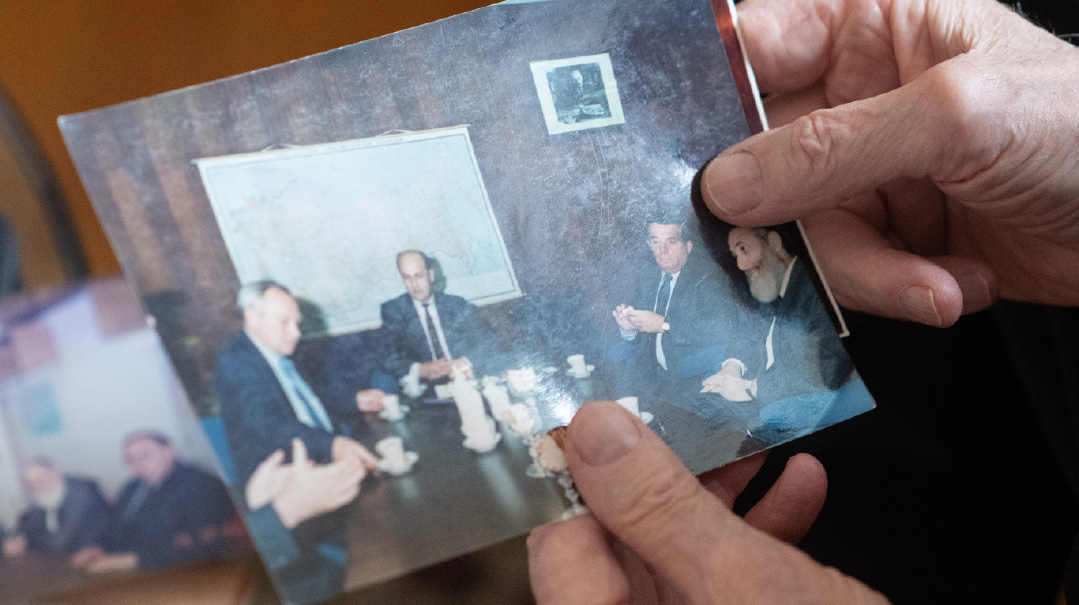
Privileged Guest List
While living under the shadow of the KGB was mostly fraught with terror, it sometimes had its moments of dark humor as well.
When Hillel married Shoshana Demichovsky in 1964, no pictures were taken at the wedding. Typical for religious weddings, this lack of “evidence” prevented the KGB from interviewing the attendees and discovering any “counter-revolutionary” activity that might have taken place there. This precaution did not always work, however.
A joke circulating at the time featured a Jew who was called to the KGB offices to register his daughter’s marriage. “Do you perhaps have a guest list with you?” the official requested. The Jew handed it over, and the official looked it over. “Don’t worry, we won’t call you in for an interrogation,” he reassured him. “More than half your guests are our men anyway.”
The Gift of Giving
Today, over 50 years since leaving the USSR, Rabbi Zaltzman lives in Crown Heights, Brooklyn, with his wife, Shoshana. They are parents of a daughter and a son and are blessed with many grandchildren and great-grandchildren.
Rabbi Zaltzman serves as president of Chamah International and has expanded the organization to include social and medical services, educational programs, and a publishing division for Jews throughout the United States, Israel, and the former Soviet Union. He was honored in 2016 by the United States Senate for his humanitarian work as part of Jewish American Heritage Month.
With the outbreak of the war in Israel on October 7, Chamah has been heavily involved in providing relief and aid to families in the south, in addition to soldiers and reservists. They recently opened a trauma center in Kiryat Malachi, helping both children and adults deal with the psychological strain of the war. “The nature of the Almighty is to do good, and when we have a zechus to do a favor for a Jew in gashmiyus, and of course in ruchniyus, there’s not much that can be bigger than that.”
(Originally featured in Mishpacha, Issue 1007)
Oops! We could not locate your form.







